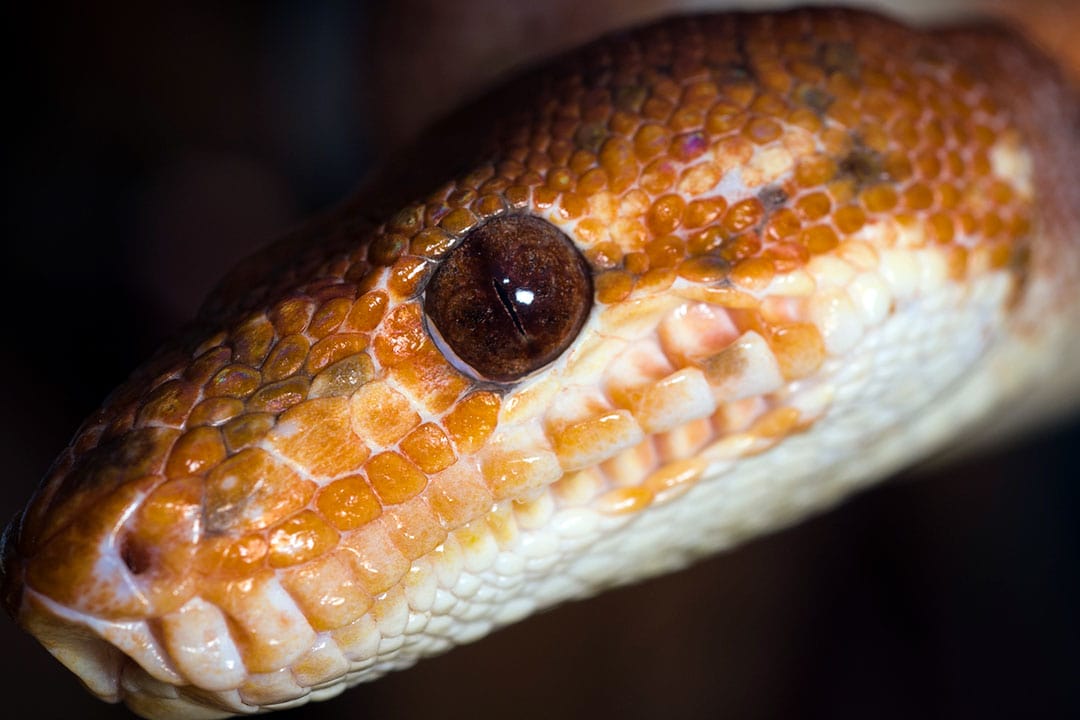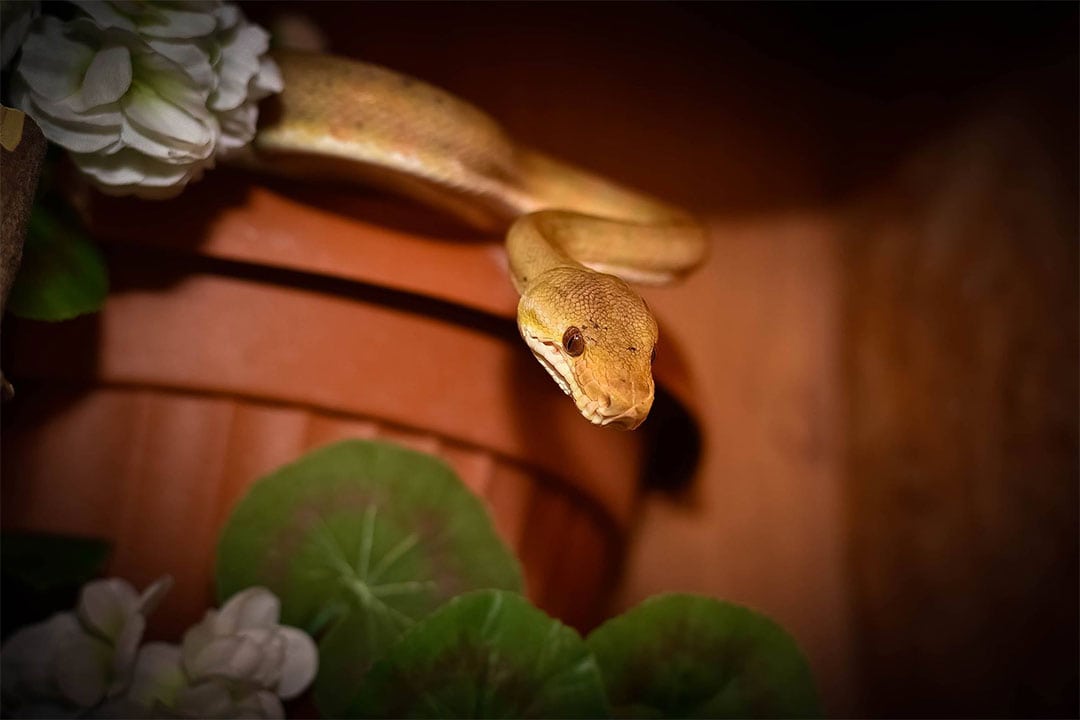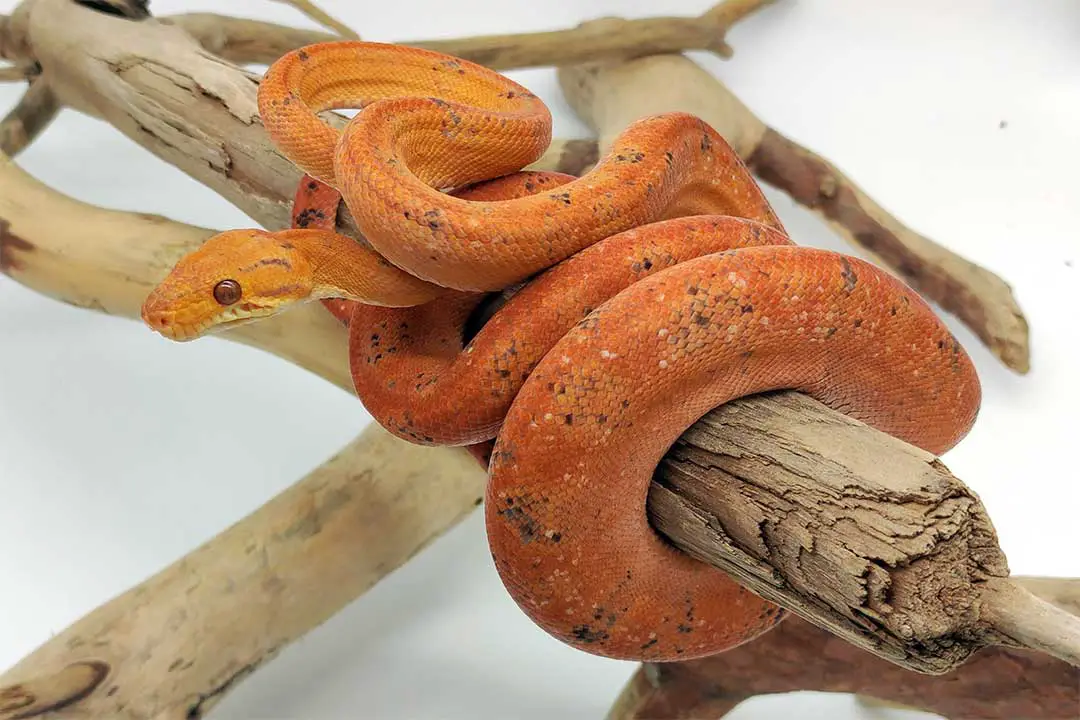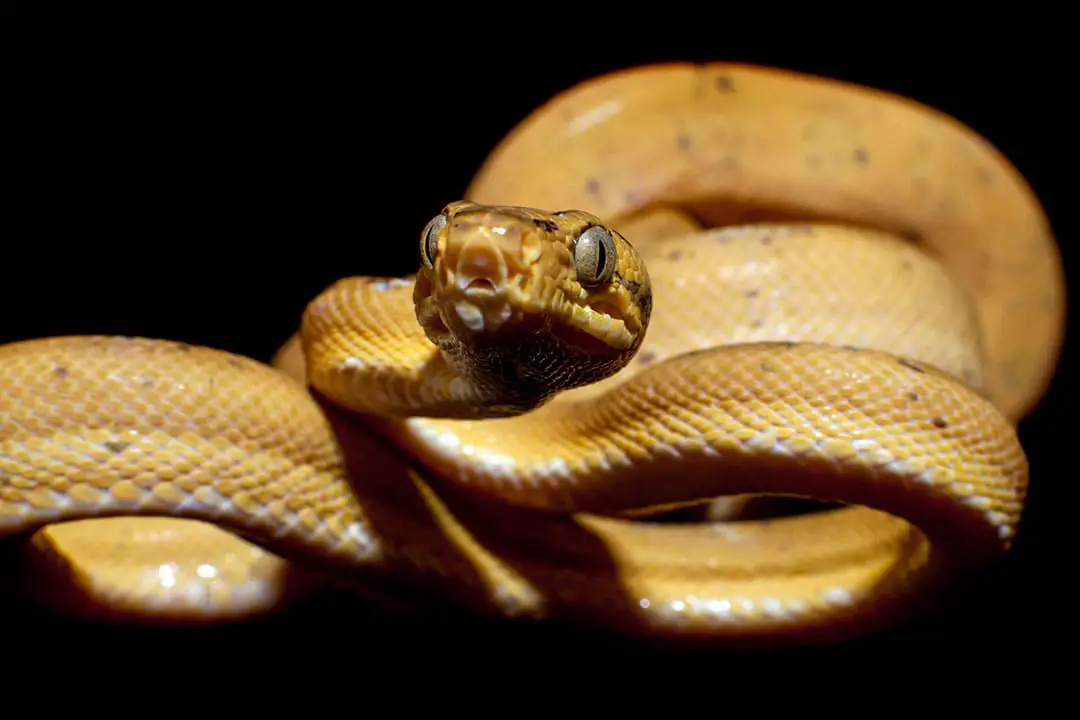Amazon tree boas (Corallus hortulanus) are wonderful display snakes. These animals have become increasingly popular in the pet trade. If you are considering one of these snakes as a pet, you may be wondering how long do Amazon tree boas live.
As a general rule, expect a captive Amazon tree boa to live over 20 years. They have been recorded as living between 12 and 21 years in captivity. These snakes likely live shorter lives in the wild, but with good care, they can reach old age.
In the Wild
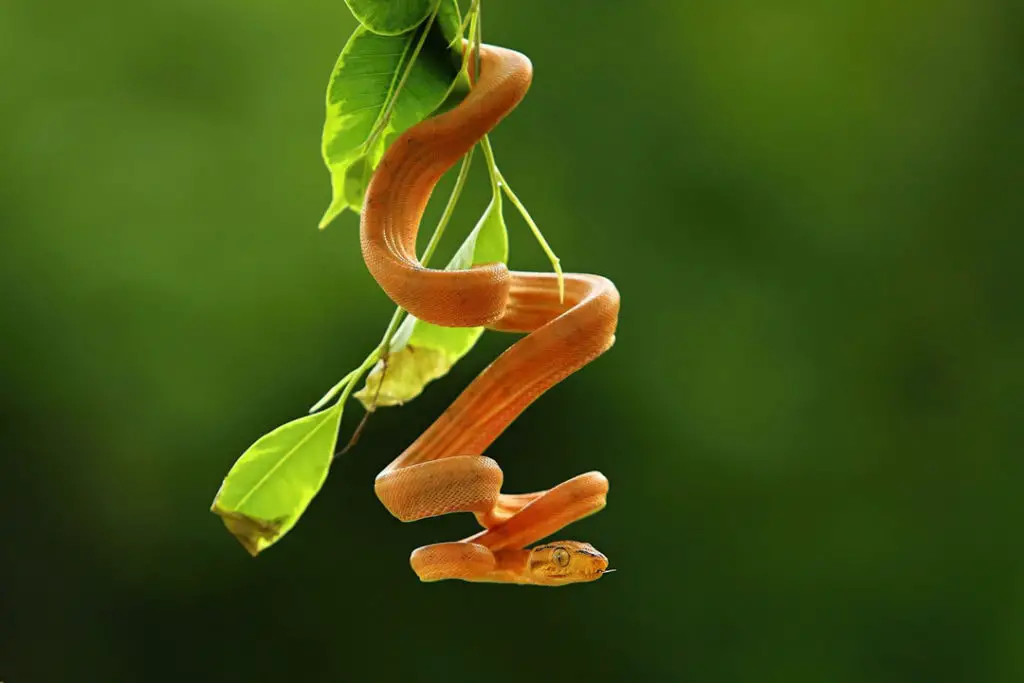
Amazon tree boas face many dangers in the wild. Most animals will not die of old age. From birth, these animals need to dodge predators and find food.
Barn owls (Tyto alba) have been observed to hunt adult snakes. As noted in this case, Amazon tree boas will freeze upon first spotting a potential predator.
This is because the species relies on its coloration to help hide it from predators. This doesn’t always help, however. Other predators also feed upon these snakes.
They are relatively small and light, so many animals have the potential to take them out. They rarely travel on the ground to help avoid terrestrial predators, but it is a risk if they leave the trees to hunt closer to the ground.
Snakes have also been observed being injured by mobs of birds. These sorts of injuries can prove fatal to wild snakes. Wounds can become infected and eventually kill a snake.
Even if the injuries don’t kill it, the snake may still have trouble hunting thanks to wounds. This can lead to weakening and eventual death.
Finding food can be a major struggle for snakes. If the snake has enough bad luck in hunting, it will eventually starve. While Amazon tree boas live in a neotropical climate, they do deal with adverse weather.
A bad storm or flood can kill these animals if they can’t escape. If the weather stays too hot or cold for the snakes for too long, they can also suffer.
Snakes can suffer from heat-related illnesses. If the snake has eaten and it gets too cold for digestion to take place, the food item can rot inside the snake and make it ill. Parasites are another danger to snakes.
Wild animals frequently pick up parasites from prey. These parasites can lower the immune system and make the snake more prone to illness. Inclusion-Body Disease can affect boid snakes and kill them.
While this has been observed mainly in captivity, it is possible that wild animals are also affected since the exact cause is currently unknown. Cancer is another killer for snakes, along with other common illnesses and infections.
Longevity in Captivity
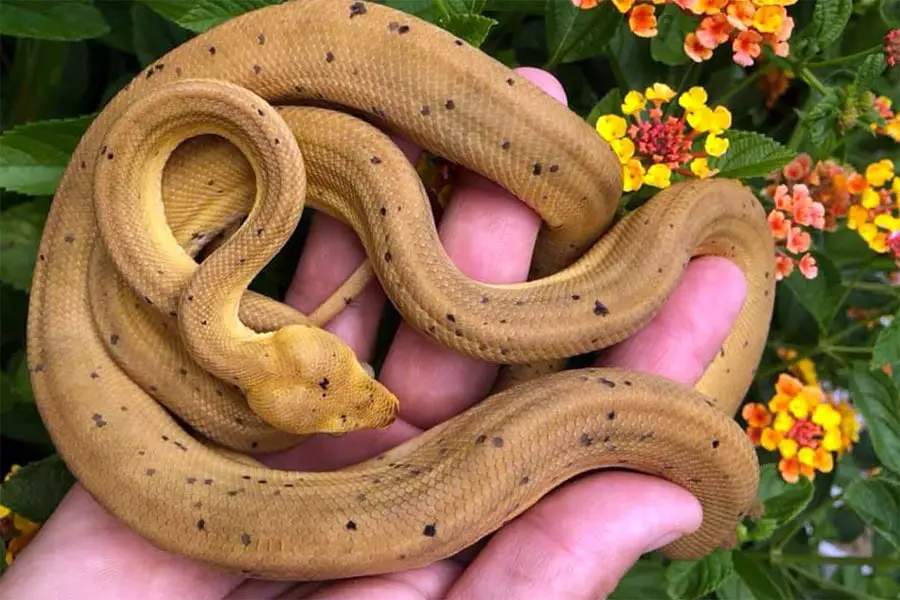
Everything you need to know about caring for Amazon Tree Boas in captivity:
Read our Amazon Tree Boa Care Sheet (Complete Guide)
Most knowledge of the life span of an Amazon tree boa comes from captive specimens.
These snakes first became common in the pet trade about 20 years ago, so some of the oldest specimens are reaching the end of their natural life span.
Once an animal has reached adulthood, it can be difficult to gauge age. With good care, these animals will live for 20 years.
Stable temperature, plenty of food, and safety mean that these animals can reach old age and are likely to pass from natural causes. Cancer is more common in older animals.
Since these snakes are not well-studied, there isn’t too much information about long-term health. They are at risk for cancer and many captive animals have hemoparasites that can be a threat to the animal’s health.
Infections are a major risk if they aren’t caught quickly. Since many of these snakes do not like being handled, it can be easy to miss the early signs of illness. Regular vet care will help your snake live longer.
Poor care is still the biggest risk to this species.
They have high temperature and humidity needs that require an experienced owner. Poor temperatures can injure or kill a snake. Low humidity will lead to dehydration and eventual shedding problems.
A stuck shed can cause injuries and infections depending on the location of the stuck shed.
High humidity isn’t too much of a problem with this species, but many snakes are vulnerable to respiratory infections if the humidity is too high for them. Live prey can cause injuries to this species. If the prey has a chance to fight back, it can cause injuries.
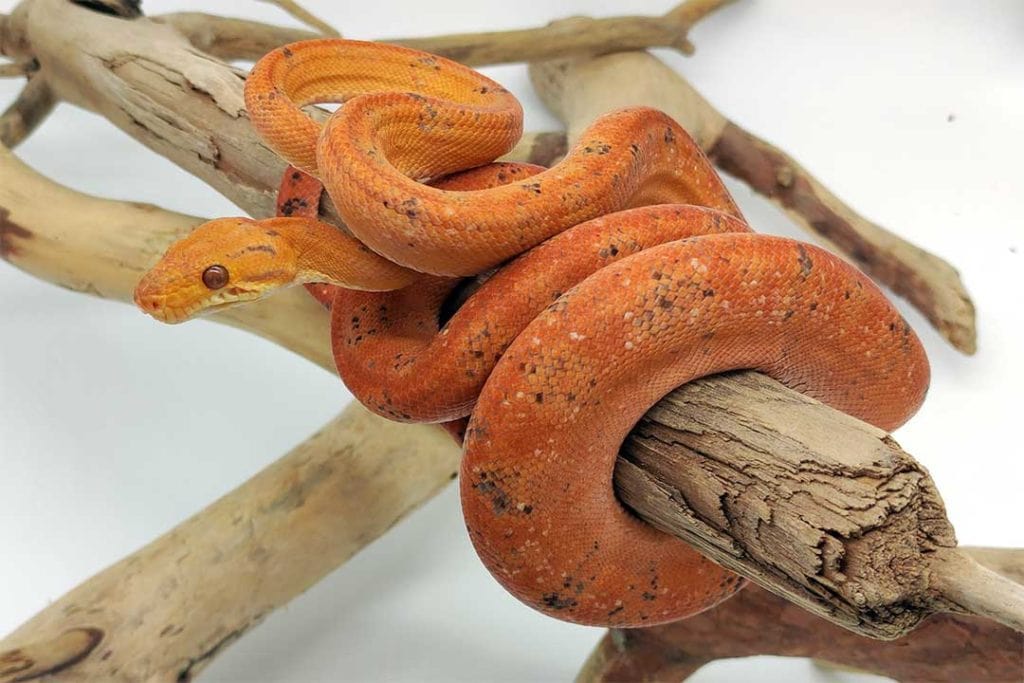
These can become infected. Sourcing healthy prey is important. Your snake gets all of its nutrients from its prey. You need to make sure your prey animals are healthy.
If they are malnourished, your snake will be malnourished. Parasites are another issue. Snakes can pick up potentially deadly parasites from prey animals.
Never feed a wild-caught mouse to your snake.
A lack of appropriate caging can also stress this species. They become stressed if they stay on the ground of an enclosure.
These animals need sturdy perches to feel comfortable and safe. A stressed animal will likely refuse meals. This can affect its health negatively over time. So long as you follow a good care sheet, you snake should live a long life.
Summary
Amazon tree boas live for up to 20 years in captivity. Since they are kept safe, fed, and have access to veterinary care, most animals will eventually pass from age-related causes. If you have any questions or comments, be sure to leave them below. We would love to hear from you.
